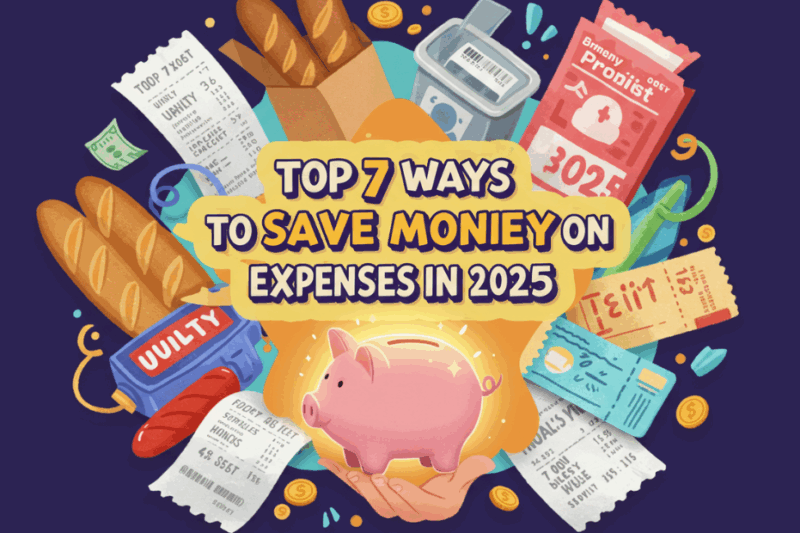Car insurance is a necessity, but rising premiums can strain your budget. In 2025, with average annual premiums in the U.S. reaching $2,145 (Bankrate, 2024), finding ways to save without sacrificing essential coverage is critical. This guide shares practical strategies to lower your car insurance costs while maintaining robust protection.

1. Compare Quotes from Multiple Insurers
Why It Works: Insurance rates vary widely between providers, even for identical coverage. Comparing quotes can save you hundreds annually.
- How to Do It:
- Use comparison sites like The Zebra or NerdWallet to get quotes from multiple insurers in minutes.
- Request quotes from at least three providers, including major players (Geico, Progressive, State Farm) and smaller regional insurers.
- Ensure quotes reflect the same coverage levels (e.g., liability, collision, comprehensive) for accurate comparisons.
- Savings Potential: Up to 20% or more, depending on the insurer (Consumer Reports, 2024).
- Tip: Check quotes annually, as rates change based on market trends and your driving profile.
2. Bundle Your Policies
Why It Works: Insurers offer discounts when you combine auto insurance with other policies, like home or renters insurance.
- How to Do It:
- Contact your current insurer to explore bundling options.
- Compare bundled rates with standalone policies to ensure savings.
- Verify that coverage limits remain sufficient for all policies.
- Savings Potential: 10–25% on premiums, depending on the provider.
- Example: Progressive offers up to 12% off for bundling auto and home insurance.
3. Take Advantage of Discounts
Why It Works: Most insurers offer a range of discounts that can stack to reduce your premium without altering coverage.
- Common Discounts:
- Safe Driver: For clean driving records (no accidents or tickets in 3–5 years).
- Good Student: For students under 25 with a B average or better (5–15% off).
- Defensive Driving Course: Complete an approved course for up to 10% off.
- Low Mileage: For drivers averaging under 7,500 miles/year.
- Telematics: Use a tracking device or app (e.g., Geico DriveEasy) to prove safe driving habits.
- How to Do It:
- Ask your insurer for a full list of discounts and eligibility requirements.
- Provide proof (e.g., course certificate, student transcript) when applying.
- Savings Potential: 5–30% per discount, with multiple discounts combinable.
- Tip: Telematics programs can save up to 40% but may track driving data, so review privacy policies.
4. Raise Your Deductible
Why It Works: Increasing your deductible—the amount you pay out-of-pocket before insurance kicks in—lowers your premium while keeping coverage intact.
- How to Do It:
- Evaluate your finances to ensure you can afford a higher deductible (e.g., $500 to $1,000).
- Adjust only collision and comprehensive deductibles, not liability, to maintain legal protection.
- Confirm the premium reduction justifies the higher out-of-pocket risk.
- Savings Potential: Raising a deductible from $500 to $1,000 can save 15–25% on premiums (Insurance Information Institute, 2024).
- Caution: Don’t set a deductible you can’t cover in an emergency.
5. Maintain a Good Credit Score
Why It Works: In most U.S. states, insurers use credit-based insurance scores to set rates, as better scores correlate with fewer claims.
- How to Do It:
- Pay bills on time and keep credit card balances low to boost your score.
- Check your credit report for errors at annualcreditreport.com and dispute inaccuracies.
- Monitor your score using free tools like Credit Karma.
- Savings Potential: Drivers with excellent credit can save up to 20% compared to those with poor credit (NerdWallet, 2024).
- Note: Credit-based pricing is banned in states like California and Hawaii, so check local regulations.
6. Choose a Car with Lower Insurance Costs
Why It Works: Vehicles with safety features, low repair costs, or less appeal to thieves have cheaper premiums.
- How to Do It:
- Research insurance costs before buying a car using tools like Kelley Blue Book.
- Opt for models with high safety ratings, anti-theft systems, or affordable parts (e.g., Honda CR-V, Toyota Camry).
- Avoid sports cars or luxury vehicles, which carry higher premiums.
- Savings Potential: Up to 30% lower premiums for safer, less expensive cars.
- Tip: Contact your insurer for a quote on a specific car model before purchasing.
7. Pay Your Premium in Full
Why It Works: Paying your annual or semi-annual premium upfront often earns a discount, as insurers save on billing costs.
- How to Do It:
- Ask your insurer if they offer a pay-in-full discount.
- Budget for a lump-sum payment or switch to bi-annual payments to spread costs.
- Compare savings against monthly payment fees (typically $5–$10/month).
- Savings Potential: 5–10% off total premium.
- Example: State Farm offers up to 8% off for annual payments.
8. Review and Adjust Coverage Annually
Why It Works: Life changes (e.g., moving, driving less) can affect your insurance needs, and outdated policies may cost more than necessary.
- How to Do It:
- Review your policy yearly to ensure coverage matches your current situation.
- Drop unnecessary add-ons, like roadside assistance if covered elsewhere (e.g., AAA).
- Update your insurer on changes, like a new address or reduced mileage.
- Savings Potential: Varies, but updating mileage or location can save 5–15%.
- Tip: Use life events (e.g., paying off a car loan) as triggers to reassess coverage.
Mistakes to Avoid
- Cutting Essential Coverage: Reducing liability or comprehensive coverage to save money can leave you vulnerable to major costs.
- Overlooking Regional Factors: Rates vary by state due to regulations and risk factors (e.g., urban vs. rural areas).
- Ignoring Fine Print: Read policy terms to avoid unexpected exclusions or fees.
- Sticking with One Insurer: Loyalty doesn’t always pay; shop around to ensure competitive rates.
Conclusion
Saving money on car insurance in 2025 doesn’t mean skimping on protection. By comparing quotes, bundling policies, leveraging discounts, and making smart choices like raising deductibles or maintaining good credit, you can lower premiums while keeping robust coverage. Start by requesting quotes from sites like The Zebra, reviewing your current policy for discount opportunities, and ensuring your coverage aligns with your needs. With these strategies, you can drive confidently and keep more money in your pocket.


